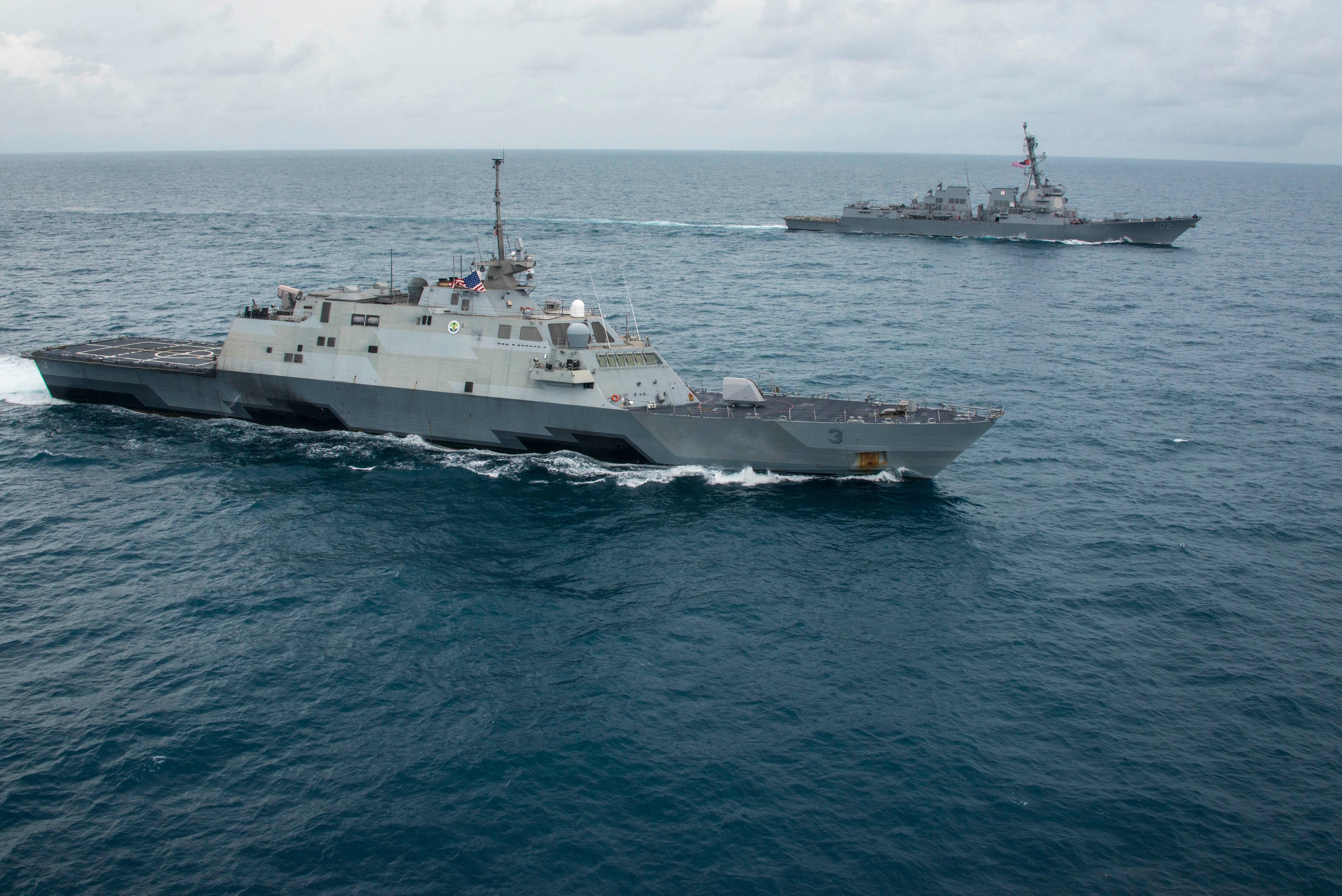WASHINGTON — The U.S. Navy has created a new program office to usher the next class of destroyer into the fleet, after the service has struggled to find a replacement for its aging cruisers and destroyers over the past decade.
The Guided Missile Destroyer (DDG(X)) program office, or PMS 460, falls under the Program Executive Office for Ships at Washington Navy Yard and is led by Capt. David Hart. The Navy hosted a small ceremony there on June 4, after Acting Assistant Secretary of the Navy for Research, Development and Acquisition Jay Stefany formally approved the establishment of the office in a late April memo.
Though the Navy isn’t looking to buy the first DDG(X) ships until fiscal 2028, the program office would oversee the development of an acquisition strategy and later would be responsible for the ship class’s design, technical data package development, construction, testing, fleet introduction and sustainment plans, according to a Navy news release.
At one time, the Navy had a flow of new large surface combatant designs and combat systems into the fleet to ensure it would stay ahead of surface and air threats. For example, the successful Spruance-class destroyer design inspired the Ticonderoga-class cruiser design, which lent its Aegis Combat System to the Arleigh Burke-class destroyer, which has seen so many evolutions that it can no longer support future growth beyond the Flight III destroyer design that’s under construction. Any future upgrades beyond the current Aegis Baseline 10 and AN/SPY-6 Air and Missile Defense Radar will have to go on a new hull design with greater space, weight, power and cooling margins.
And that’s where the Navy has struggled.
The Navy canceled a CG(X) cruiser replacement program in 2010 because costs grew far beyond what the Navy could afford. The service then embraced a Future Surface Combatant family of systems approach that would include a large and small manned combatant and a large and medium unmanned combatant – all of which are in testing or in production today except for the large manned combatant. The start date for Large Surface Combatant acquisition was pushed from 2023 to 2025 and then to 2028, as the Navy struggles to define what the ship will be.
Among the challenges for the Navy has been identifying what capability it needs from a large combatant and how much it’s willing to pay – especially as the service has been increasingly clear that future operations will rely more heavily on small and unmanned combatants dispersed throughout the battlespace. In this approach, fewer large combatants will conduct only those missions which the smaller ships cannot do.

Chief among those missions is to haul around a large radar and large missiles. DDG(X) will likely start with the SPY-6 AMDR and the Aegis Baseline 10 combat system, with room to grow as more powerful radars are developed down the line. DDG(X) will also likely be asked to carry hypersonic missiles or other long-range weapons that are too large to fit in today’s Mk 41 vertical launching system tubes. And it will be asked to host directed energy weapons, electromagnetic warfare tools and more that consume a large amount of power.
The Navy expects that its large surface combatant fleet, which today is made up of about 92 cruisers and destroyers, will fall to about 74 in the future, reflecting the Navy’s preference to make smaller combatants the workhorse of the fleet and save DDGs for where they’re most needed.
“The Guided Missile Destroyer will provide the flexibility and margins necessary to succeed the DDG-51 class as the Navy’s next enduring large surface combatant, combining the DDG 51 FLT III combat systems elements with a new hull form, an efficient Integrated Power System and greater endurance [that reduces] the fleet logistics burden,” reads the Navy news release.
Because of the importance of the integrated power system to the development of DDG(X), PEO Ships’ Electric Ships program office will transition into the DDG(X) program office, the news release notes. Of the 16 billets available to the new program office, 11 will be filled by incumbent positions in the Electric Ships office.
“The DDG(X) Integrated Power System is a key foundation of the ship, and maturation in a timely and cost effective manner requires dedicated and experienced resources within PEO Ships. [Electric Ships’] expertise and previous development efforts are critical to the success of the DDG(X) program in realizing an Integrated Power System. Other mission areas of the Electric Ships Office, such as Power and Energy Systems, Naval Power Technology Development, and Platforms Integration & Transition, are vital to the future of our Navy, and efforts will continue under the umbrella of PMS 460,” reads the news release.
Throughout this current fiscal year, the news release notes, the Navy has worked on conceptual design efforts and begun talking to General Dynamics Bath Iron Works and Ingalls Shipbuilding, the two yards that build the Arleigh Burke-class destroyers, to discuss potential cost, schedule and performance targets for DDG(X). The Navy’s FY22 budget request “funds transition from conceptual design to preliminary design, brings industry teams fully onboard, and continues Integrated Power System and hull form land-based test activities to ensure program risk reduction. FY22 preliminary design will lead to FY26 detail design and FY28 construction start.”
Megan Eckstein is the naval warfare reporter at Defense News. She has covered military news since 2009, with a focus on U.S. Navy and Marine Corps operations, acquisition programs and budgets. She has reported from four geographic fleets and is happiest when she’s filing stories from a ship. Megan is a University of Maryland alumna.




